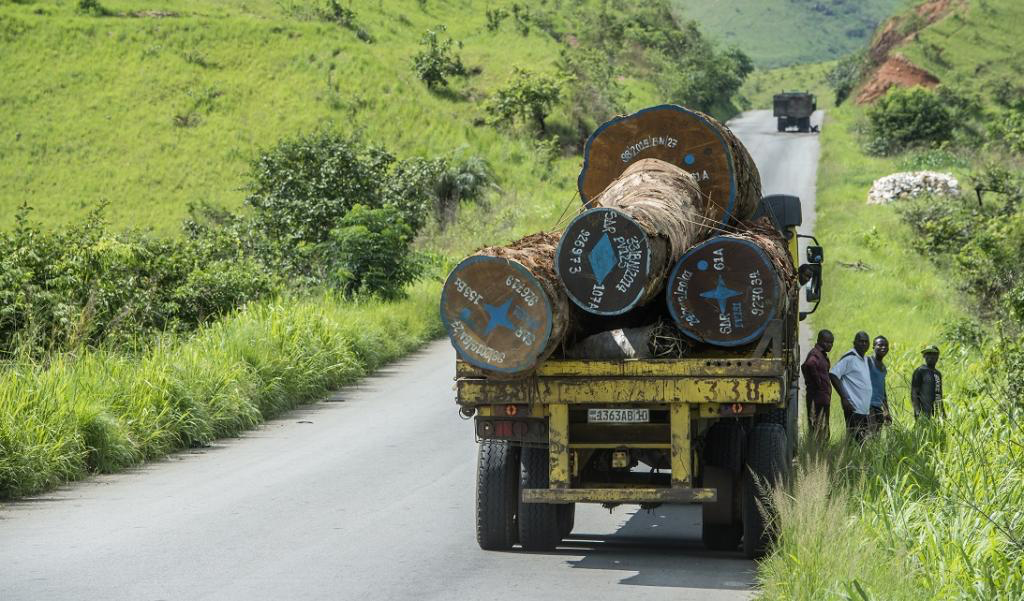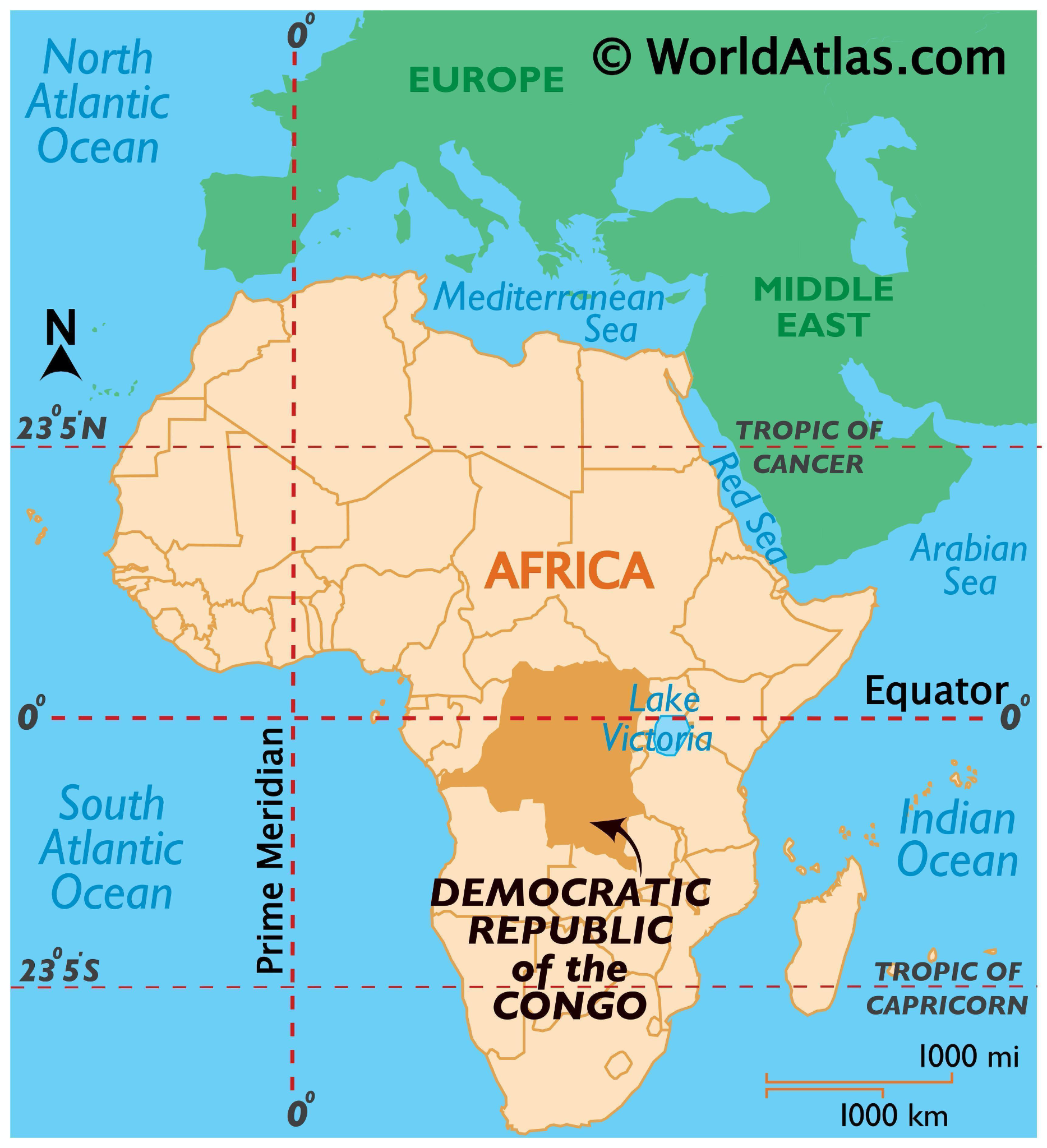Description

Disclaimer: Copyright infringement not intended.
Context
The issue of deforestation in the Congo rainforest, which is the world's second-largest rainforest after the Amazon.
Details
- The Congo rainforest, the world's second-largest rainforest, is experiencing significant deforestation.
- The rainforest spans six African countries, with the Democratic Republic of Congo (DRC) containing 60% of the rainforest.
Deforestation Statistics
- In 2022, the DRC lost over 500,000 hectares of forest, contributing to the overall decline of the Congo rainforest.
- The rate of primary forest loss in the DRC remains alarmingly high, with persistent deforestation.
Global Deforestation Impact
- Worldwide, 4.1 million hectares of primary tropical forest were lost in 2022, equivalent to the size of Switzerland.
- Brazil accounted for 43% of the total tropical primary forest loss, followed by the DRC and Bolivia.
- This deforestation resulted in the emission of 2.7 billion tonnes of CO2, equivalent to India's annual emissions.
Deforestation in the DRC
- From 2002 to 2022, the DRC lost 6.33 million hectares of humid primary forest, representing 35% of its total tree cover loss.
- The total area of humid primary forest in the DRC decreased by 6.1% during this period.
- Primary forests, which provide important ecosystem services, are threatened by ongoing deforestation.
Key Drivers of Deforestation
- Small clearings near cyclical agricultural areas contribute to most of the primary forest loss in the DRC.
- Population growth and increased food demand lead to shorter fallow periods and agricultural expansion into primary forest.
- Lack of access to electricity and clean cooking fuel in the DRC has resulted in heavy reliance on forests for food and energy needs.
Factors Contributing to Deforestation
- Slash-and-burn agriculture, uncontrolled bushfires, charcoal production, cattle ranching, and illegal logging are the primary drivers of deforestation in the DRC.
- Charcoal, produced by cutting and burning timber, is the dominant energy source in the region.
Economic Factors and Governance Issues
- The DRC government's decision to auction oil and gas permits in environmentally sensitive areas has raised concerns.
- Economic factors and poverty contribute to deforestation, as the DRC is among the world's poorest nations.
- Forest governance failures have hindered efforts to address deforestation, despite commitments made in the Glasgow declaration.
Implications and Challenges
- Deforestation in the Congo rainforest poses significant challenges for biodiversity conservation, climate change mitigation, and the livelihoods of local communities.
- Reducing primary forest loss in the region remains a challenge, requiring comprehensive strategies and international cooperation.
About Congo

Disclaimer: Copyright infringement not intended.
- The Democratic Republic of Congo (DRC) is a country located in Central Africa.
- It is the second-largest country in Africa and is known for its vast natural resources, including minerals and a significant portion of the Congo rainforest.
Geography and Biodiversity
- The DRC shares borders with nine other African countries and is characterized by diverse landscapes, including rainforests, savannahs, and mountain ranges.
- The country is home to the Congo River, the second-longest river in Africa, and the Congo Basin, one of the world's largest tropical rainforest areas.
- The Congo rainforest is renowned for its exceptional biodiversity, hosting numerous plant and animal species, including endangered species such as gorillas and elephants.
Population and Culture
- The DRC has a population of over 85 million people, making it one of the most populous countries in Africa.
- It is home to several ethnic groups, including the Bantu, Luba, Kongo, and many others, each with its own distinct cultural traditions, languages, and customs.
- Kinshasa, the capital city, is a vibrant cultural hub with a diverse population and rich artistic and musical traditions.
Natural Resources and Economy
- The DRC is abundantly rich in natural resources, including copper, cobalt, gold, diamonds, and timber.
- However, the exploitation of these resources has been accompanied by challenges, such as corruption, illegal mining, and environmental degradation.
- The economy heavily relies on the mining sector, but agriculture, including subsistence farming, also plays a significant role in rural areas.
Political and Social Challenges
- The DRC has experienced periods of political instability and conflict, leading to humanitarian crises and displacement of people.
- The country has faced challenges related to governance, corruption, weak infrastructure, and limited access to basic services such as healthcare and education.
- Efforts to establish stability, democracy, and sustainable development have been ongoing, supported by international organizations and peacekeeping missions.
Conservation and Environmental Concerns
- The Congo rainforest, located in the DRC, is under threat from deforestation, primarily driven by activities such as slash-and-burn agriculture, illegal logging, and mining.
- Deforestation poses risks to biodiversity, contributes to climate change, and affects the livelihoods of local communities who depend on forest resources.
- Conservation initiatives, international collaborations, and sustainable land-use practices are being pursued to protect the unique ecosystems and promote sustainable development.
Future Outlook
- The DRC has immense potential for economic growth, sustainable development, and environmental conservation.
- Addressing political, social, and environmental challenges, while promoting good governance and inclusive development, is crucial for the country's future progress.
- International support, investment, and cooperation are vital in realizing the DRC's potential and ensuring a better future for its people and natural resources.
|
PRACTICE QUESTION
Q) What measures can be adopted by the government and international community to address deforestation and promote sustainable development in the region? Examine the role of governance, economic factors, and international cooperation in the preservation of this critical ecosystem. (150 words)
|

https://www.downtoearth.org.in/news/africa/congo-world-s-2nd-largest-rainforest-continues-to-vanish-with-half-a-million-hectares-lost-in-2022-says-report-90284












